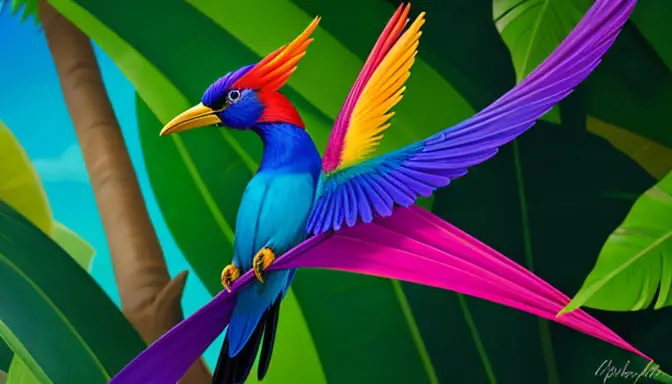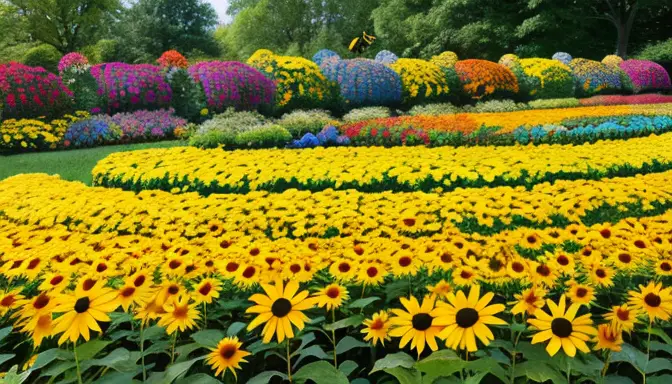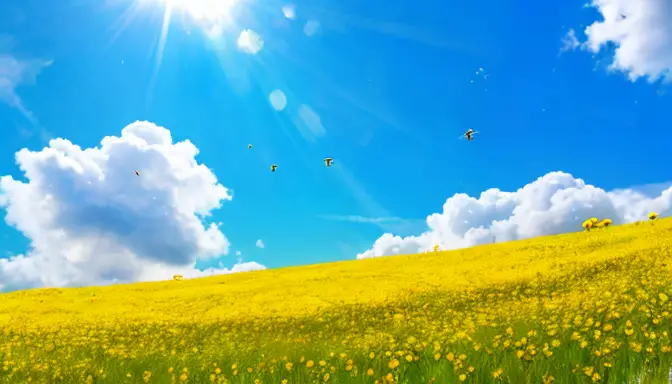
When it comes to exploring the world of flora, flowers beginning with the letter B offer a delightful array of colors, shapes, and meanings. Let’s dive into the enchanting realm of these breathtaking blooms:
- Begonia: Known for their vibrant colors and unique asymmetrical shapes, begonias are popular ornamental flowers that can brighten up any indoor or outdoor space.
- Bluebell: Delicate and charming, bluebells carpet woodland floors with their bell-shaped flowers in shades of blue and purple, creating a magical sight to behold.
- Bird of Paradise: Resembling a colorful bird in flight, the bird of paradise flower is a tropical marvel with bold hues and striking shapes that exude exotic beauty.
- Bougainvillea: Celebrated for their vibrant and papery bracts that surround tiny flowers, bougainvilleas bring a burst of color to gardens and landscapes, making them a favorite among many gardeners.
- Bleeding Heart: With heart-shaped flowers that appear to bleed from a protruding tip, the bleeding heart plant adds a romantic and unique touch to shaded garden areas, symbolizing love and tenderness.
- Black-eyed Susan: A cheerful wildflower with bright yellow petals and a dark center, the black-eyed Susan attracts bees and butterflies with its sunny disposition, adding a pop of color to any garden.
- Buttercup: Symbolizing joy and happiness, buttercups with their glossy petals in shades of yellow, white, and pink, bring a sense of charm and brightness to meadows and gardens.
- Bellflower: Graceful and bell-shaped, bellflowers bloom in various colors and sizes, adding an elegant touch to garden borders and rockeries with their delicate appearance.

1. Begonia
Begonias are truly a sight to behold.
With their vibrant colors and unique asymmetrical shapes, these ornamental flowers stand out in any setting, whether indoors or outdoors..
Their ability to thrive in various environments makes them a favorite among gardeners and flower enthusiasts alike. The diverse range of begonia species offers a plethora of options, from the bold and striking to the delicate and charming.
One of the most fascinating aspects of begonias is their versatility. They can be grown in hanging baskets, flower beds, or containers, allowing for creative and decorative displays. Whether you prefer the wax begonias with their glossy leaves or the tuberous begonias with their showy blooms, there is a begonia variety to suit every taste and preference.
When it comes to caring for begonias, providing the right amount of water, sunlight, and well-draining soil is key to ensuring their health and longevity.
These flowers are relatively low-maintenance, making them a popular choice for both experienced gardeners and beginners looking to add a pop of color to their outdoor spaces..

Loading... Seconds Left for
Miniature Orchid Terrarium Gallery!

2. Bluebell
Delicate and charming, bluebells are bell-shaped flowers that carpet woodland floors in shades of blue and purple, creating a magical and enchanting sight. These enchanting blooms, also known as harebells, are a staple of spring landscapes, heralding the arrival of warmer days with their ethereal beauty. The slender stems of bluebells sway gently in the breeze, their drooping clusters of flowers casting a spell of tranquility over the forest floor.
Bluebells a
re not only visually appealing but also carry a rich folklore and symbolism.
In Celtic mythology, bluebells were believed to ring to summon fairies to their gatherings, adding a touch of mystique to these already enchanting flowers..
Their delicate appearance and soothing colors have inspired poets and artists alike, capturing the essence of tranquility and grace in nature.
These woodland gems thrive in shaded areas, forming carpets of blue that seem to stretch on endlessly like a serene ocean under a canopy of trees. The sight of a bluebell woodland in full bloom is nothing short of breathtaking, evoking a sense of wonder and magic that transports observers to a realm of pure beauty and serenity.

Resembling a colorful bird in flight, the Bird of Paradise flower is a tropical marvel with bold hues and striking shapes that add a touch of exotic beauty.
Native to South Africa, this stunning flower belongs to the Strelitziaceae family and is known for its distinctive appearance..
Let’s dive deeper into the fascinating world of the Bird of Paradise:
- Vibrant Colors: The Bird of Paradise flower boasts vibrant hues of orange, blue, and purple, resembling the plumage of a tropical bird. Its vivid colors make it a standout addition to any garden or floral arrangement.
- Striking Shape: The flower’s shape is reminiscent of a bird’s beak and plumage, giving it an exotic and unique look. The intricately designed petals and sepals form a striking composition that is sure to catch the eye.
- Tropical Symbolism: In many cultures, the Bird of Paradise flower symbolizes freedom, beauty, and paradise. Its association with tropical regions adds a sense of exoticism and allure to any setting where it blooms.
- Landscaping Marvel: Often used in landscaping to create a tropical ambiance, the Bird of Paradise plant can grow up to several feet tall, making it a prominent feature in gardens and botanical displays.

4_Bougainvillea">4. Bougainvillea
Bougainvillea, a beloved flowering plant, is renowned for its vibrant and papery bracts that encircle tiny flowers, creating a stunning visual display. These climbing plants are a favorite choice for gardens and landscapes, adding a burst of color and elegance to any setting. Let’s delve into some fascinating aspects of the beautiful bougainvillea:
- Vibrant Bracts: The most striking feature of the bougainvillea is its vibrant bracts that come in various shades of pink, purple, red, and orange, providing a dazzling contrast to the green foliage.
- Low Maintenance: Bougainvilleas are relatively low-maintenance plants, thriving in warm climates with minimal care. They are drought-tolerant once established, making them ideal for arid regions.
- Attracts Wildlife: The colorful bracts of the bougainvillea attract pollinators like butterflies and hummingbirds, enhancing the ecological diversity of the garden.
- Varied Growth Habits: Bougainvilleas can be trained to grow as shrubs, vines, or even small trees, offering versatility in landscaping design.
With its dazzling colors and easy-care nature, bougainvillea is a popular choice for adding a touch of Mediterranean charm to gardens and outdoor spaces.
Whether cascading down a trellis or adorning a patio, these vibrant plants never fail to captivate with their beauty and flair..
![]()
ng="async" src="https://plantandseedguide.com/wp-content/uploads/2024/04/breathtaking-flowers-that-start-with-the-letter-b_5.png" alt="5. Bleeding Heart" />
5. Bleeding Heart
When it comes to unique and captivating flowers that start with the letter B, the Bleeding Heart plant stands out for its distinctive appearance and romantic allure. This enchanting flower, scientifically known as Dicentra spectabilis, features heart-shaped blooms that dangle gracefully from arching stems, creating a mesmerizing display in shaded garden areas.
The Bleeding Heart’s flowers, which come in shades of pink and white, have a whimsical appearance, with each bloom resembling a tiny heart that appears to be “bleeding” from a tip-like protrusion.
This visual effect gives the plant its evocative name and adds a touch of drama to any garden setting..
Not only is
the Bleeding Heart visually striking, but it also carries symbolic meanings of love, compassion, and emotional sensitivity. Its elegant and delicate flowers make it a popular choice for romantic gardens or as a unique focal point in floral arrangements.
With its intriguing shape and rich symbolism, the Bleeding Heart plant is a true gem in the world of flora, capturing the hearts of gardeners and nature enthusiasts alike with its beauty and charm.
bleed
When it com
es to the Bleeding Heart flower, its unique characteristic of appearing to from a protruding tip is what sets it apart from other blooms. The heart-shaped flowers of this plant create a sense of drama and romance in any shaded garden area. As if each petal is shedding a tear, the Bleeding Heart captures attention with its striking visual appeal.
The Bleeding Heart flower, also known as Lamprocapnos spectabilis, is native to parts of Asia and North America. Its name perfectly encapsulates the visual metaphor it represents, evoking emotions of love and vulnerability. The delicate pink and white blooms of the Bleeding Heart add a touch of whimsy and elegance to any garden setting.
Imagine a garden where the Bleeding Heart flowers sway gently in the breeze, their droplets of color creating a mesmerizing effect.
These enchanting flowers are not only visually captivating but also hold symbolic meanings of deep affection and compassion..
Their presence in a garden can transform it into a place of beauty and contemplation.
from a prot
ruding tip, the bleeding heart plant is a romantic and unique addition to shaded garden areas.
When it comes to adding a touch of romance and uniqueness to shaded garden areas, the bleeding heart plant stands out as a captivating choice. With its distinctive heart-shaped flowers that seem to bleed from a protruding tip, this plant adds a whimsical charm to any garden setting. The delicate and intricate blooms of the bleeding heart plant create a sense of enchantment, drawing attention and admiration from all who encounter it.
Imagine a shaded corner of your garden transformed into a scene straight out of a fairy tale, with the bleeding heart plant as the star attraction. Its romantic symbolism and unusual appearance make it a conversation starter and a focal point that evokes a sense of wonder and magic. As the dappled sunlight filters through the trees, illuminating the unique blooms, the bleeding heart plant casts a spell of beauty and intrigue over the surroundings.
pan id="6_Black-eyed_Susan">6. Black-eyed Susan
Black-eyed Susans are cheerful and vibrant wildflowers that brighten up any garden or landscape.
These charming flowers, also known as Rudbeckia hirta, are a favorite among gardeners for their easy maintenance and beautiful appearance..
Here are some key features and care tips for Black-eyed Susans:
- Black-eyed Susans are native to North America and belong to the sunflower family.
- They are characterized by their bright yellow petals and dark brown centers, resembling a cheerful face.
- These flowers bloom from early summer to fall, attracting bees, butterflies, and birds to the garden.
- Black-eyed Susans are drought-tolerant and thrive in full sun, making them a low-maintenance choice for gardeners.
Whether planted in borders, meadows, or containers, Black-eyed Susans add a pop of color and a touch of whimsy to any outdoor space. Their resilience and beauty make them a popular choice for both beginner and experienced gardeners alike.
>7. Buttercup
Symbolizing joy and happiness, buttercups are simple yet charming flowers with glossy petals that come in shades of yellow, white, and pink, brightening up meadows and gardens.

8. Bellflower
Bellflowers, also known as campanula, are a delightful addition to any garden with their graceful bell-shaped blooms. These charming flowers come in a variety of colors and sizes, ranging from delicate white and soft pink to vibrant purple and blue hues. Their elegant appearance and dainty petals make them a favorite among gardeners looking to add a touch of sophistication to their outdoor spaces.
One of the
unique features of bellflowers is their versatility in garden borders and rockeries. Whether cascading down a slope or standing tall in a flower bed, bellflowers create a visual impact with their clusters of blooms. Their ability to thrive in different conditions, from full sun to partial shade, makes them a versatile choice for landscaping projects.
When planted in groups, bellflowers can create a stunning display that attracts pollinators like bees and butterflies.
Their nectar-rich flowers provide a food source for these beneficial insects, contributing to the overall health of the garden ecosystem..
Additionally, the bellflower’s long blooming period ensures a continuous show of color throughout the growing season.

Frequently_Asked_Questions">Frequently Asked Questions







